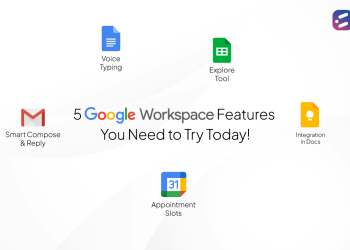While cloud computing does offer financial benefits by reducing the need for physical infrastructure and providing resource scalability, unexpected costs can in fact add up quickly.
There are, for example, networking costs, which are what cloud providers incur for maintaining their networks, including hardware, setup, and maintenance. These costs are passed on to customers, particularly for data transfer and inter-region communication. Storage costs, too, depend on the type of storage required to meet a company’s data needs. Computing costs can range from a few dollars a month to several thousand.
Navigating the uncertainties of cloud costs doesn’t have to be a daunting task that strains your budgets and resources. Google Cloud Platform (GCP) offers ways to control and reduce costs while maintaining the performance needed for your business operations. Consider this guide your roadmap to optimizing GCP expenses.
1. Monitor current spend
The foundation of any cost optimization strategy starts with understanding where your money is going. On GCP, it’s essential to identify high-spend areas—whether it’s a particular service, project, or region.
Several GCP tools can assist with this. Google Cloud Billing Reports, for example, give detailed insights into spending, broken down by project and service, helping you track your costs effectively, Cost Table Reports provide an itemized view and Budgets and Alerts can notify if you approach or exceed your predefined budget.
2. Rightsize compute resources
Rightsizing is the process of adjusting resources to match actual workload requirements, helping you avoid paying for unused capacity. GCP’s compute engine rightsizing recommendations tool helps analyse past usage data and offers suggestions for resizing virtual machines (VMs) to better fit actual needs. This allows you to optimize compute resources and ensure you’re only paying for what your business truly requires.
3. Choose the right types of storage
Standard, Nearline, Coldline, and Archive — GCP provides different storage classes each designed for specific use cases.
- Standard is best for frequently accessed data
- Nearline and Coldline are suitable for data that are accessed less frequently but need to remain available
- Archive is ideal for long-term data storage that rarely needs to be accessed.
You’ve also got GCP’s Object Lifecycle Management tool that allows you to shift inactive data automatically to a lower-cost storage class. All of this is going to optimize storage costs.
4. Review networking costs
Networking charges can be a hidden drain on your GCP budget, especially when dealing with inter-region traffic. Two of the most common areas of networking costs include egress traffic (data leaving the GCP network) and inter-region communication, which can quickly add up if not properly managed. GCP has tools like Cloud CDN (Content Delivery Network) to reduce egress charges by caching content closer to users, which also improves performance.
5. Finetuning autoscaling
Autoscaling is one of the most effective ways to optimize cloud resources as during peak times, additional resources are allocated, and when demand drops, excess resources are removed, ensuring that you only pay for what you actually use. Fine-tuning autoscaling settings helps avoid over-provisioning or underperformance. A great example of this is using autoscaling with Google Kubernetes Engine (GKE), which manages variable workloads by automatically adding or removing compute nodes.
6. Use Preemptible VMs
For batch jobs and other non-critical workloads, Preemptible VMs offer a highly cost-effective solution. They are perfect for tasks like continuous integration and continuous deployment (CI/CD) pipelines, data analysis, or any workload that can tolerate interruptions. These short-lived instances can save businesses up to 80% compared to regular instances, making them ideal for cost-sensitive tasks.
7. Committed use contracts
Another major way to reduce costs on GCP is through Committed Use Contracts. If your business can predict its resource needs for the next one to three years, committing to specific resource usage can yield up to 57% savings on virtual machines (VMs). In addition to this, GCP offers sustained use discounts for running certain resources for a significant portion of the month.
8. Regular cost audits
Cost optimization is an ongoing process. Regular audits help identify new savings opportunities and allow you to adjust your strategies as your usage changes. This is where tools such as Cloud Billing Reports, Budgets and Alerts, and Billing Export to BigQuery offer advanced capabilities for monitoring and auditing your cloud spend.
Achieving cost efficiency on GCP is entirely possible with well-thought-out customized strategies – and that’s where partnering with the right Managed Services partner like CloudNow makes a huge difference. We offer specialized advice on leveraging GCP’s cost management capabilities to their fullest. Talk to us today.












